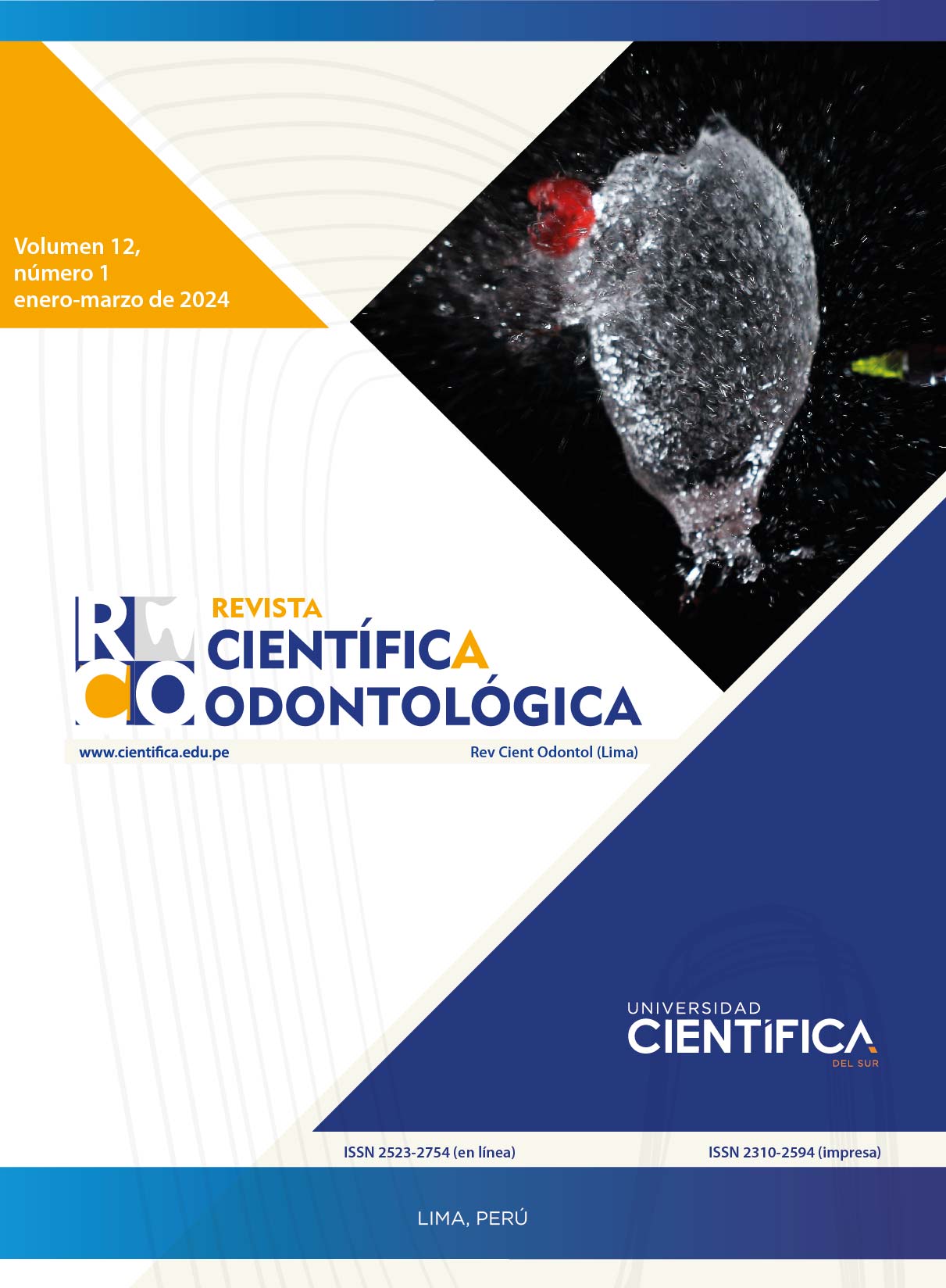Surface roughness of two composite resins after immersion in soda drinks: in vitro study
DOI:
https://doi.org/10.21142/2523-2754-1201-2024-185Keywords:
surface roughness, carbonated beverages, Composite resinsAbstract
Objective: Compare the surface roughness of two composite resins after immersion in carbonated beverages. Materials and methods: 160 resin discs (6 x 2 mm) were divided into 8 groups (n=20 per group) according to type of resin (Filtek™ Z350 XT® and Palfique LX5®) and type of immersion in beverages (distilled water, Coca Cola®, Inca Kola® and Kola Escocesa®. The immersions were carried out under a structured cycle: 4 immersions a day for 5 days, intermediate storage in distilled water and overnight incubation for 8 h at 37°C. The measurements with the roughness meter were evaluated in three times: baseline, 7 and 14 days. The three-way Anova test was used at P<0.05. Results: Roughness showed differences only for the individual factors of time (P<0.000) and resin (P=0.000), and for the interaction time*drink (P=0.000) and resin*drink (P=0.003). Roughness was higher with Filtek Z350 XT® immersed with Inca Kola® (0.85 ± 0.37) than 14 days compared to other times (P=0.035) and with Palfique LX5 immersed in Coca Cola® at 7 days (1.61 ± 0.42) and in Inca Kola® at 14 days (1.66 ± 0.56) compared to distilled water (P<0,05). Conclusion: Surface roughness was affected by the type of resin, the type of soft drink and the immersion time. The roughness was greater with the Palfique LX5® nanohybrid resin, the Inca Kola® drink and after 14 days of immersion.
Downloads
Downloads
Published
Issue
Section
License
Copyright (c) 2024 Sharon Gianella Alarcón-Torres, Martín Andrés Chávez-Méndez

This work is licensed under a Creative Commons Attribution 4.0 International License.

Este obra está bajo una licencia de Creative Commons Reconocimiento 4.0 Internacional.












